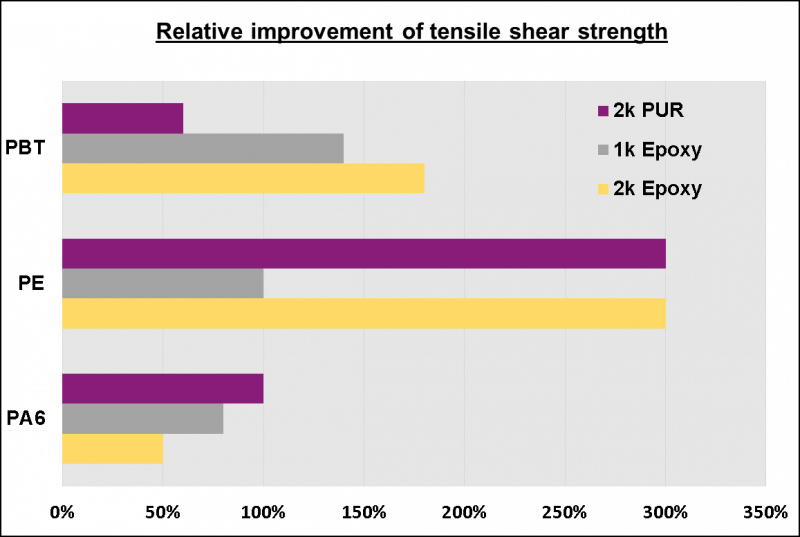Thinking about improved structural bonding of plastics? Plastics are usually characterised by inert surfaces with surface energies between 20 and 40 mN/m. In order to wet a surface, however, the surface energy of the polymer must exceed the one of the paint, ink or the adhesive. This condition can be achieved through a plasma treatment of the surface and is called activation in plasma technology.
But more important than the improved wetting are the chemical groups which are newly incorporated into the surface. This so-called surface functionalisation creates additional chemical “bonding anchors” or “bonding sites” for the adhesive.
The relative bond improvement is shown in this diagram for various plastics and adhesives based on the increase of shear force until bond failure. Depending on the substrate and adhesive, it is possible to achieve shear strengths of up to 50 MPa through an optimized treatment with the Plasmabrush PB3 Plasma Surface Treatment System from Relyon Plasma.

Relative increase of the shear strength after a short plasma treatment with dry compressed air at atmospheric pressure for the various technical thermoplastic materials: PBT (polybutylene terephthalate), PE (polyethylene, HDPE) and PA6 (polyamide). 100% corresponds to a doubling of the shear strength compared to the untreated surface.
Comparable effects are found on polypropylene (PP) and LCP polyester (LCP). It is important that the process parameters of gas flow, processing distance and the applied electrical power are adapted to the desired processing speed and material. A typical starting point that achieves a significant improvement of the bond quality is at ~200m/s working speed with a working distance of ~12 mm and the use of the Relyon Plasma nozzle A450 with 50L/min air.
We are happy to run some tests with you on your parts – why not pay a visit to our Technology Centre?
Categories: adhesives, plastics, surface preparation
